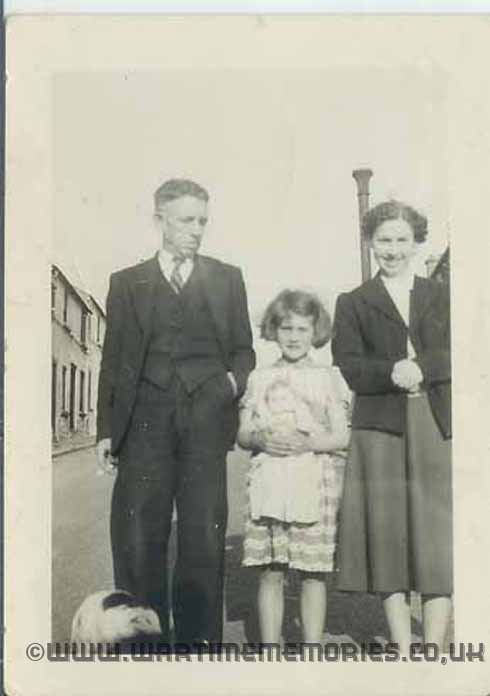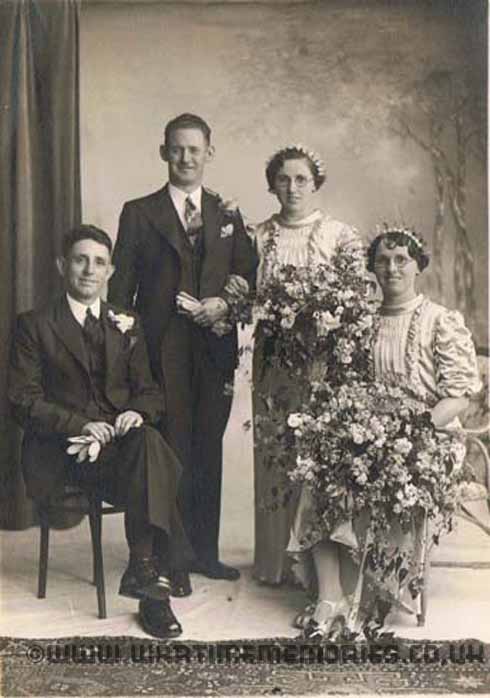Additions will be checked before being published on the website and where possible will be forwarded to the person who submitted the original entries. Your contact details will not be forwarded, but they can send a reply via this messaging system.
please scroll down to send a message
Pte. Thomas Neill Martin
British Army 16th Btn. Royal Irish Rifles
from:53 Mount Street, Dromore, Co. Down
Thomas Neill Martin, eldest son of Robert James Martin and Agnes Sarah Bell was born in Dromore, County Down on the 29th May 1897. He had one younger brother also called Robert James and 3 sisters Minnie, Agnes Sarah and Ellen Ann. His father was a Boer War veteran and the 1901 census discloses that his uncle Thomas John Bell was helping his sister look after young Tommy and Minnie whilst their father was in South Africa. Thomas John Bell was later to be killed just a few days before the Battle of the Somme in WW1 not far from the relative safety of trenches his nephew had probably helped to construct..
Tommy enlisted in the call to arms on the 7th November 1914, joining the Second County Down Volunteers in Lurgan on the 14th November. This was later renamed as the 16th (Service) Battalion, Royal Irish Rifles (Pioneers) acting in the main role of Pioneer Battalion for the 36th (Ulster) Division.
His Regimental number was 16/124 but I do not know to which Company, Section or Platoon he was allocated. However I know he served with that Battalion throughout the First World War until early September 1918, when he was transferred back to England in the Labour Corps (Number 64877)
From Jeffrey Martin (author of Dromore’s Great War Heroes), “ The Dromore Weekly Times photocopy (for the following Saturday 21st November 1914) details a T. Martin (Mount Street) who enlisted that same week. I cross checked the article that I copied when the T.Martin medals were for sale and low and behold he is number 16-124 ! In other words, he was in the queue 22 places in front of my grandfather ( Sgt.Walter Martin). As I have a keen interest in the 16th Bn RIR, I know for a fact that men with these low numbers joined on the first day, in the second to third week of November, because by xmas numbers were up to about 800 and they imported 14th Bn. RIR men in Jan and Feb 1915 to bolster the 16th Battalion's numbers to the required 1200 establishment.â€
His medals are the 1914-15 Star, British War Medal, Victory Medal, Special Constabulary Long Service Medal (EIIR) "Ulster" and a Battle of the Somme Commermorative Medal, also the Silver War Badge. The Special Constabulary "Ulster" Medal is a rare and dear to buy medal on its own. The fact that the word "Ulster" appears on the reverse of Tommy’s Special Constable Medal indicates it was issued on or after 1956, and that Thomas Martin saw service with the Crown during a period of over 40 years" The Somme Commemorative medals were only given to veterans returning to the Somme who fought there in 1916 or 1940 (WW2). In his case WW1 obviously. They were issued on special occasions such as the 40th or 50th anniversary (1956 or 1966) and indeed there were even some in 1976 for the few remaining veterans,
In the details listed with the medals it says that he was transferred to the Labour Corps (this generally indicates the man was wounded or incapacitated even by shell shock etc), able to do some work but not fit (no disrespect) for front line duty. His Labour Corps number was 648737 - a number series issued in the UK around September 1918. He was also given what was known as a Silver War Badge, this was so that when you went home you could wear it on your civilian clothes to show you had served and were injured and not "a shirker" as some would say. He was discharged on 27th November 1918. Though the war was over, it was still important to wear it as many including Jeffrey's grandfather did not return until March 1919 or later. The fact that the word "Ulster" appears on the reverse of Martin's Special Constables medal indicates it was issued on or after 1956, and that indicates that Thomas Martin saw service with the Crown during a period of 40 years"
I met and married Tommy’s granddaughter Marie in 1962 and got to know Tommy for a few years. I never spoke to him about the past and he rarely mentioned the war years like many of his generation. Tommy died on the 8th September 1969 and regrettably Marie and I were in Italy at the time, so she never had a chance to say goodbye to her dearly loved Granddad. Neither of them got to see the grandchildren for whom I have written a summary of the Battalion’s experiences from 1914 to 1919 which I wish to share with others interested in the exploits of these men in conditions we all find so difficult to comprehend.

